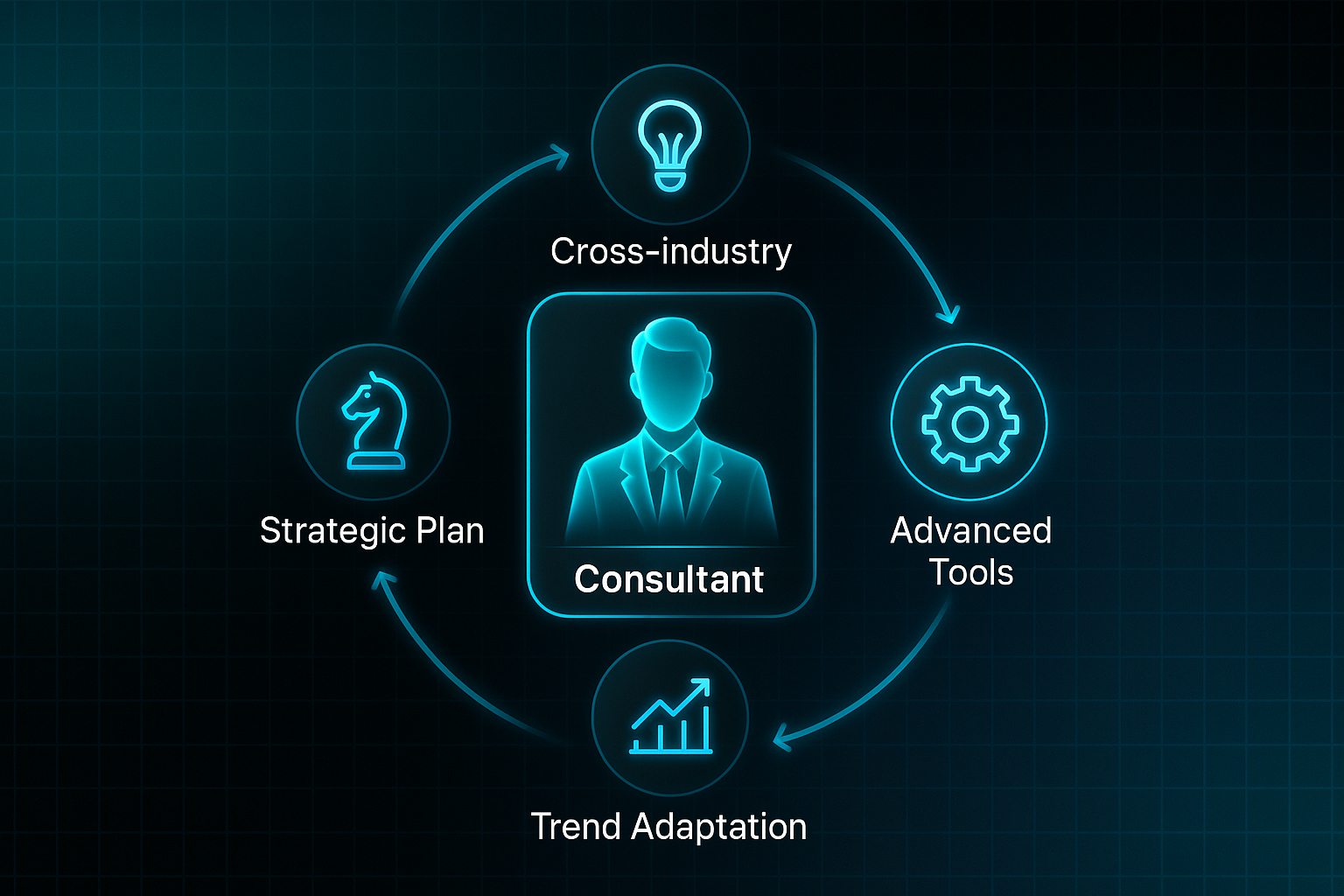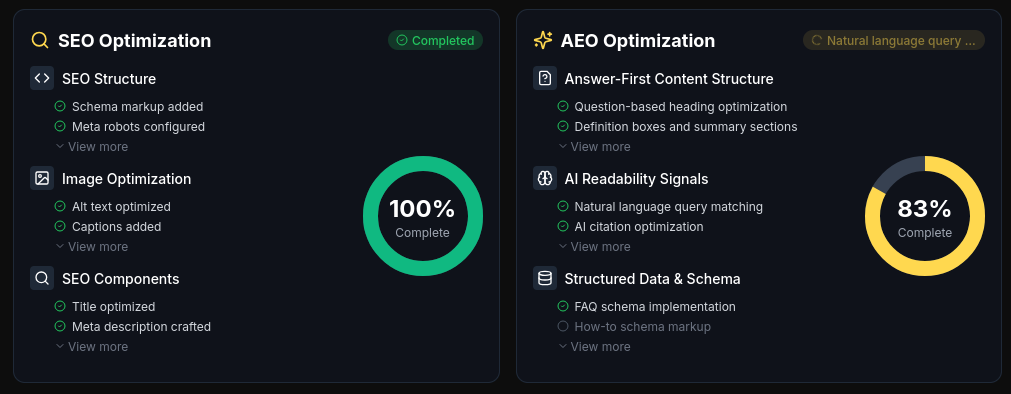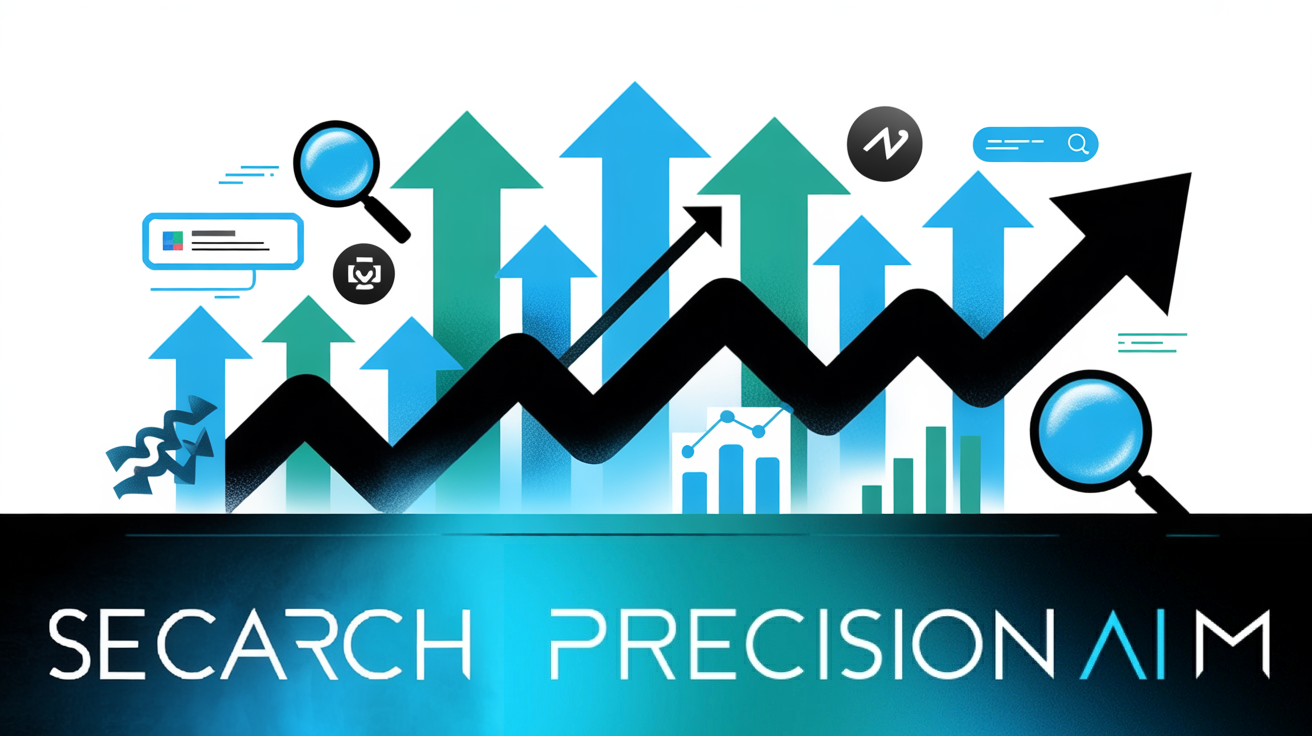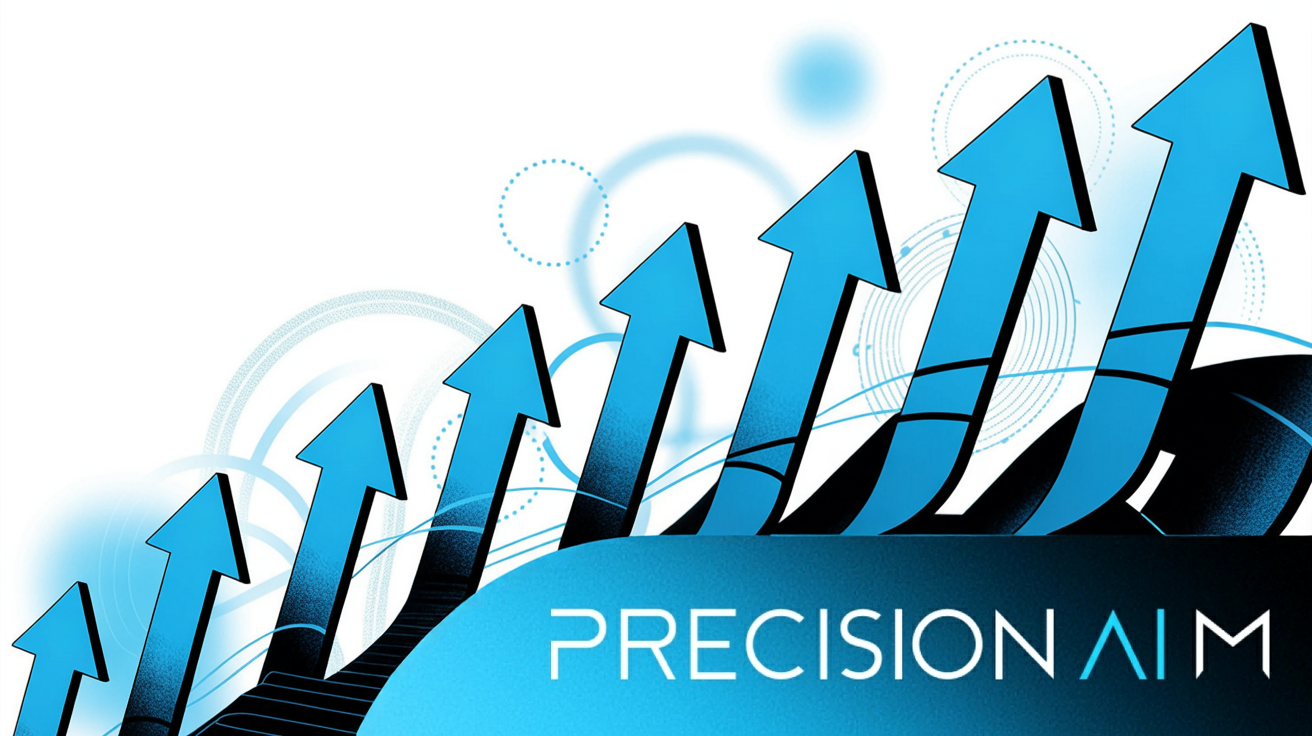Paid search advertising can feel overwhelming—especially when you’re unsure what a consultant actually delivers or how results are tracked.
I’ve seen businesses struggle to manage campaigns, keep up with platform changes, and measure ROI. It’s easy to waste budget or miss growth opportunities without expert guidance.
In this article, I’ll break down exactly what search engine marketing consulting services include, from campaign setup and keyword research to ongoing optimisation and transparent reporting. You’ll learn how consultants structure engagements, what deliverables to expect, and how their expertise drives measurable improvements in traffic, conversions, and cost efficiency.
I’ll also share benchmarks, pricing models, and practical tips for choosing the right partner—plus common pitfalls to avoid. By the end, you’ll know how to set clear expectations and get the most value from your SEM consulting investment.
What are Search Engine Marketing Consulting Services?
Understanding Search Engine Marketing (SEM) Consulting
So, what exactly does search engine marketing (SEM) consulting involve? At its heart, these are professional services designed to help businesses ramp up their visibility and results using paid search ads—think platforms like Google Ads or Microsoft Advertising.
Unlike organic SEO, which aims to boost your website in non-paid listings, SEM consulting zooms in on paid campaigns that offer immediate exposure in search engine results. The driving goal behind SEM consulting is clear: bring in highly targeted traffic, collect qualified leads, and produce measurable business outcomes by carefully planning, managing, and refining pay-per-click campaigns.

SEM consultants have deep expertise in the ins and outs of paid search tactics. They deploy sophisticated tools and bring a fresh perspective that can often outperform what in-house teams produce. While internal advertising teams may be fine for handling the daily nuts and bolts, consultants contribute broad cross-industry insights, advanced planning, and faster adaptation to new trends.
Unlike an employee who has been with one company for a long time, consultants have broader experience across the whole industry and understand what is working well for other companies.
This becomes especially valuable when advertising platforms shift or competition heats up.

Core Components and Campaign Types
SEM consulting services usually cover a range of campaign types, each suited to various client objectives. Here’s how those tend to break down:
When consultants get involved, they draw upon these campaign styles to meet each client’s needs and use insightful market research and platform features to maximise efficiency.
- Search Campaigns
Text ads triggered by specific keywords, designed to catch users with strong intent right when they search. - Shopping Campaigns
Product ads showing images and prices—perfect for e-commerce businesses wanting to guide shoppers directly to products. - Display Campaigns
Eye-catching banner or image ads running across websites and apps, often aimed at building brand awareness or retargeting visitors. - Local Service and Maps Ads
Verified business ads highlighted in map or local search results—great for generating calls, queries, or foot traffic to physical shops.
How SEM Consulting Works and Why It Matters
At its core, SEM consulting orchestrates end-to-end campaign management—from keyword research and competitor reviews to compelling ad copy, constant optimisation, and thorough performance reporting.
Consultants lean on advanced analysis tools and real-time data to measure results and continuously refine strategies. For businesses, this means detailed ROI tracking and the flexibility to make quick, effective improvements.

Now, the SEM consulting world in 2024 looks a little different. There’s a bigger emphasis on AI-driven automation, stronger privacy measures due to new regulations, and tougher competition that’s driving up ad costs. In this landscape, having an outside expert keeps companies ahead in search marketing. This firm foundation will help as we dig deeper into the standard service offerings consultants typically deliver.
Typical SEM Consulting Services and Deliverables
Mapping Out SEM Consulting Deliverables: What Clients Actually Receive
When you hire a search engine marketing (SEM) consultant, you’re not just paying for ideas—you’re getting a suite of clear, results-driven services that make every penny of your ad budget work harder. Transparency about what’s delivered matters throughout the journey: consultants track, report, and align all activities to your core business goals.
Comprehensive Keyword Research & Analysis
Everything starts with keyword research. Consultants turn to SEMrush, SpyFu, and Google Keyword Planner, creating targeted lists and filling gaps after competitor analysis. They update negative keywords weekly, guided by Google’s Search Terms Report, to keep your conversion rates in the 3–6% range, while minimising wasted spend.

Paid Search Campaign Setup and Proactive Management
Campaign setup requires choosing either precise single keyword ad groups (SKAGs) or broader keyword groupings, based on account needs. Conversion tracking—leads, calls, or sales—gets configured with Google Ads admin access. Consultants optimise targeting with Remarketing Lists for Search Ads and refined demographics. Scheduled weekly checks, biweekly fine-tuning, and monthly audits catch errors early, protecting both budget and results.
A comprehensive SEM audit involves systematically reviewing account structure, evaluating keyword performance, analyzing ad copy, and assessing campaign settings like targeting and bidding strategies to identify and fix common issues that impact performance.
Ad Copywriting and Creative Asset Optimisation
Once keywords are in place, consultants write three to five ad versions per group, reviewing monthly and refreshing quarterly from Google Ads Experiments data. Key benchmarks—click-through rate (3–4.5%), conversion rate (2.5–6%), and Quality Score—guide continuous improvement. Copy always matches landing page messaging for maximum relevance.
Conversion Tracking and Analytics
You need rock-solid tracking to measure what’s working. Google Tag Manager and Google Analytics 4 are used to tag forms, calls, and sales actions, all tested in staging before going live. Results are audited monthly for real-time accuracy, aiming for conversion rates above 3.75%. Routine backups and a defined recovery plan keep campaign data safe.

Competitor Analysis and Performance Benchmarking
Staying ahead means watching rivals. Using SEMrush, SpyFu, and Auction Insights, consultants monitor impression share, ad position, and cost changes. Strategies adjust to compete for top-three ad positions and more impression share—without overspending on rival brand terms.
Resource and Budget Guidance
Practical resource planning is essential. Here’s a quick tool and time breakdown to guide you:
| Deliverable | Tool Cost (monthly) | Typical Hours per Task | Frequency |
|---|---|---|---|
| Keyword Research | £110–140 | 3–5 | Monthly/quarterly |
| Campaign Setup/Management | Free | 2–4 | Weekly/monthly |
| Creative/Copywork | Free | 2–3 | Monthly/quarterly |
| Tracking & Analytics | Free | 2–4 | Monthly |
| Competitor Analysis | £30–40 | 2–3 | Monthly/quarterly |
On average, plan for £180–£200/month for tools and 10–18 hours of consultant time. Regular progress check-ins ensure transparency and prevent surprises.
Built-In Safeguards and Error Prevention
Experienced consultants work from robust checklists and scheduled audits to avoid common SEM troubles—poor keyword match types or incomplete tracking, for example. Testing every update in a staging environment provides a last line of defence before changes go live.
These deliverables make up the backbone of SEM consulting. With the “what” mapped, it’s time to see how the full lifecycle unfolds—from onboarding to optimisation.
The SEM Consulting Engagement Process: Step-by-Step
Clear Phases of a Professional SEM Consulting Engagement
Bringing in a search engine marketing (SEM) consultant means following a clear, structured process where every step is there for good reason—progress you can track, risks under control, and total transparency. But what actually happens along the way?
Here’s how the journey typically unfolds.
Phase 1: Audit and Discovery—Uncovering SEM Opportunities
It all starts with a deep audit of your Google Ads or Bing accounts, Google Analytics, and website CMS (Content Management System). The first 1–2 weeks are spent benchmarking performance with SEMrush, reviewing keyword match types, and spotting wasted spend.
Conversion tracking gets checked using Google Tag Manager, with any missing pixels or issues recorded. You’ll get a prioritised report with 8–12 actionable recommendations and “quick wins” for instant savings. Count on 10–20 hours of consultant time, at $1,000–$5,000. Everything is backed up before live updates.
Phase 2: Goal-Setting and Strategy Alignment
Workshops define SMART goals (Specific, Measurable, Achievable, Relevant, Time-bound) and map out KPIs (CPA, conversion rate, ROAS, CTR) to revenue milestones. Vanity metrics? Not here—every target ties directly to your bottom line.
This phase involves 5–10 hours and is included in an initial engagement fee of $2,000–$10,000.
Phase 3: Campaign Buildout and Setup
The strategy now moves into action. Campaigns are organised by priority, with keywords and negatives loaded in, and 3–5 ad variants created per group for testing. Conversion events use Google Tag Manager, checked in staging first.
For landing pages and A/B testing you’ll see Unbounce and Optimizely in use. Allow 20–40 hours and a budget of $5,000–$20,000; data exports make rolling back easy if necessary.
Phase 4: Continuous Optimisation and Testing
Once campaigns are live, weekly reviews adjust bids, budgets, and negatives while pausing underperforming ads. Landing pages and creatives update monthly, with A/B tests in Unbounce or Optimizely. Quarterly audits realign strategy.

If CPA or CTR drop, automated alerts prompt action. New clients should expect a 2–3 week performance baseline. Ongoing costs: $1,500–$5,000/month for 10–20 hours of consulting.
Phase 5: Transparent Reporting and Strategic Review
Reports arrive bi-weekly or monthly via Google Data Studio. Every quarter, consultants recommend three next steps, cross-checking all analytics. Expect 5–10 hours/month for this work.
Built-In Safeguards and Validation
Consultants lean on validation checklists, robust testing in staging, and rollback plans at each phase to keep campaigns—and tracking—healthy throughout.
So, that’s the framework that keeps businesses in control and delivers truly measurable SEM results. Next, we’ll look at how each phase drives visibility, lead quality, and business growth.
Key Benefits of Search Engine Marketing Consulting Services
Quantifying SEM Consulting Impact
Let’s talk numbers—because with search engine marketing (SEM) consulting, you really do see a measurable uplift in your key metrics.
Companies that work with an SEM consultant often experience a 15–40% increase in website traffic within just three months. That’s not a rounding error.
A focused 90-day digital marketing campaign for business communications company Nextiva resulted in a 43% increase in organic traffic.
For branded campaigns, it’s common to see impression share climb over 60%.
If you’re in the B2B or retail space, results can be even more dramatic—ad traffic gains of 25–50% aren’t unusual, often leaving in-house efforts in the dust.
The trick is to keep an eye on your platform dashboards, comparing impression share and clicks with industry benchmarks to know if your gains are on target.
Higher Conversion Rates and Cost Efficiency
Conversion rates are where things get really interesting.
Consultants deliver 5–12% conversion rates, blowing past the DIY average of 2–5%. This is down to regular bid tweaks, tight negative keyword lists, and smart ad plus landing page updates.

Add to that a 30–60% drop in cost per acquisition (CPA), all from budget reallocation and those ever-vigilant spend audits.
Setting platform alerts for CPA is a safety net that keeps money from slipping through the cracks.
Internal Resource Savings
One thing people don’t always expect—consultants give your team time back.
Instead of staff spending 8–10 hours monthly tinkering with campaigns, that workload drops to just 2–3 hours when an expert is steering the ship.
That means five to ten hours freed up every month for your team to invest where it matters most.
Specialist Expertise and Reporting Transparency
It gets better. Certified consultants unlock early access to platform features and use advanced tools for faster pivots when markets shift.
Reporting is fully transparent—think weekly updates for bigger accounts, monthly for smaller ones.
Transparent dashboards show your conversion breakdown and ROI, so you’re never left in the dark.
Prerequisites for Consulting Success and Common Pitfalls
To get the most from your consultant, you’ll want to have admin-level ad platform access ready, robust conversion tracking in place, landing pages prepped, budget approved, and a single point of contact.
Common DIY stumbles—like letting broad matches run unchecked—are covered through systematic reviews and targeted fixes.
Your Competitors Are Using AI. Are You?
We help companies transition into the new age of marketing.

Limitations and Decision Criteria
Of course, there are a few scenarios where SEM consulting isn’t the knockout solution.
Strictly regulated sectors, ultra-niche audiences, or campaigns with less than $2,000/month ad spend may not see the same ROI.
But if managing your search ads is eating up more than ten hours monthly—or your results have gone flat—it’s a sure sign you’re due for outside help.
Summary: Typical Outcomes at a Glance
- Traffic Growth
15–40% increase in three months - Conversion Rate Lift
5–12% for consultant-led campaigns - Lower CPA
30–60% reduction - Internal Time Savings
5–10 hours/month recouped - Certified SEM Expertise
Early access to platform features - Transparent Dashboards
Frequent, decision-ready reporting - Readiness & Safety Nets
Defined prerequisites and backup protocols - Limitations
Not all sectors/volumes yield high ROI
Those are the tangible upgrades on offer. Next, let’s demystify SEM consulting pricing so you can pick a structure that aligns with your marketing goals and budget.
SEM Consulting Pricing Structures and Contract Models
Comparing SEM Consulting Billing Models: What Clients Need to Know
When it comes to search engine marketing (SEM) consulting, pricing is far from one-size-fits-all.
Picking the right structure helps you keep your budget under control, while sidestepping costly surprises.
Flat Monthly Fees and Retainers: Predictable Costs and Typical Ranges
Monthly retainers offer predictability.
Small businesses tend to pay $500–$1,500, mid-market firms $2,000–$5,000, and large enterprises $9,000+ each month.
This covers ongoing optimisation, ad management, reporting, and creative updates—extras like landing pages or analytics might cost more.
Expect a minimum commitment of six to twelve months, and always have inclusions clarified in writing.
Percent of Ad Spend: Alignment and Risks
Agencies may charge 10–20% of ad spend, with minimums from $500–$2,500/month and a required budget of $1,000–$5,000.
It's an appealing, scalable model, but it could incentivise overspending or deprioritise smaller accounts.
Insist on clear fee structures and always check your CPA before and after any changes.
Performance-Based, Hourly, and Project Pricing
Performance pricing ties fees to leads or sales—often 10–30% of revenue or $50–$500 per event.
Hourly rates run $100–$350 for strategy and $100–$200 for technical work. Project fees can range from $2,500–$30,000+.
Clear scopes and robust tracking are key.
Setup Fees, Minimums, and Budgeting Checklist
You’ll encounter setup fees from $500–$5,000, with ad spend minimums of $2,000–$5,000/month.
Longer contracts can sometimes get those waived.
Request detailed proposals, set a written trial period, and keep documentation of all inclusions.
Regular contract reviews keep everything aligned and on track.
How to Choose the Right SEM Consulting Agency or Consultant
Selecting a search engine marketing (SEM) partner calls for careful planning. If transparency and measurable outcomes matter, you need a firm framework to guide your decision.
Actionable Criteria for Assessing SEM Consulting Partners
Begin by clarifying your goals and SEM KPIs (Key Performance Indicators)—traffic, leads, cost per acquisition, and conversion rate. Make sure ad accounts are accessible and tracking is robust.
Always request sector-specific case studies showing 15–60% KPI improvements in 3–9 months, then verify these using client references. Prioritise agencies that offer tailored audits, focused recommendations, and dashboard samples from real campaigns.
For larger spends, weekly reporting is ideal; small accounts usually get monthly updates. Look for current Google Ads or Microsoft Ads certifications and proven expertise.
Never overlook data—retain full access to accounts and campaign information. Contracts should outline migration terms with no hidden restrictions.
Sequential Vetting Steps for Agency Selection
Stay organised with this concise checklist:
- Document KPIs and goals
Decide what matters most. - Shortlist sector-experienced, certified agencies
Confirm credentials and relevant history. - Analyse case studies and confirm references
Validate results with previous clients. - Ask strategic interview questions
Clarify their approach and reporting habits. - Assess dashboards and reporting cadence
Ensure dashboard samples and report frequency suit you. - Review contracts for deliverables and data terms
Confirm migration and data clauses are clear. - Contact references for satisfaction and transparency
Discuss reliability and support. - Disqualify unsuitable candidates
Remove agencies missing key criteria.
Benchmarks and Red Flags
Remember these benchmarks and warning signs:
- Track Record
Verified case studies. Red flag: No client results. - Sector Fit
Relevant experience. Red flag: No sector focus. - Reporting
Genuine dashboards, regular updates. Red flag: Rare or unclear reports. - Contracts
Flexible terms, clear exits. Red flag: Lock-in or vague clauses. - Technology
Certified tools. Red flag: Outdated access. - References
Contactable clients. Red flag: Refusal or poor reviews.
Dedicate 6–10 focused hours to vetting and checking references. Only choose partners showing sector experience, transparency, and full account access. That’s how you protect your budget and set up campaigns for real success. Next, let’s cover common SEM consulting pitfalls and ways to steer clear.
Common Challenges and How to Avoid SEM Consulting Pitfalls
Essential Prerequisites and Setup
Let’s start with the basics. For search engine marketing (SEM) consulting to actually deliver, your setup must be rock solid. That means having admin or editor access to every crucial platform: Google Ads, Microsoft Ads, Google Analytics 4 (that’s Google’s analytics suite), Tag Manager, and landing page testing tools like Unbounce or Optimizely.
At least 90 days of campaign data and live conversion tracking are non-negotiable—without these, analysis is little more than guesswork. Before making any major changes, remember to back up budgets, account structures, and negative keyword lists. This gives you full reversibility if things don’t pan out.
Clearing Up Goals and Alignment
Ever wonder why ad spend sometimes goes down the drain? Unclear objectives are often the culprit, wasting 10–20% of monthly budgets. That’s £1,000–£2,000 for every £10,000 spent.
Set SMART goals—make them Specific, Measurable, Achievable, Relevant, and Time-bound. Quarterly reviews are a must. Track changes in a dedicated log and validate your KPIs before you shift strategy. In tightly regulated industries, make sure all adjustments get compliance sign-off.
Account Structure and Negative Keyword Signals
Messy account setups and ignored negative keyword lists can burn 15–25% of your ad budget. Regular audits keep ad group relevance sharp (anything scoring under 6/10 needs attention).
Clone and back up those negative lists, refreshing them weekly or after any big update. Watch for spend and Quality Score improvement to gauge the impact. If you’re running international accounts, use clear naming conventions and run segmented audits by region.
Landing Page and Creative Misalignment
If landing pages don’t match your ads’ promises, bounce rates soar past 70% and conversions dip below 3%, squandering £750–£2,000 a month. Headlines and messaging must match exactly, simplify forms to 2–4 fields, and keep everything mobile-friendly.
Duplicate your pages before tinkering and log every change. Smaller sites should expect 6–8 weeks before seeing meaningful test results.
Routine Optimisation and Avoiding the “Set-and-Forget” Trap
Leaving campaigns unchecked for three months can torpedo efficiency by 20–40%. Make biweekly optimisation, monthly creative refreshes, and quarterly strategy audits a habit.
Always export baseline metrics before major tweaks so you’ve got a safety net. For low-spend accounts (under £2,000 per month), monthly reviews are generally enough.
Budget and Spend Control
Without close monitoring, budgets can haemorrhage £1,500–£4,000 out of every £10,000. Use team spreadsheets and logging to stay on top of spend, and keep a close eye on CPA (Cost Per Acquisition) and ROAS (Return On Ad Spend) for 2–6 weeks after making changes. International budgets benefit from being staged to buffer against currency fluctuations.
Breaking Channel Silos
Want your SEM results to climb? Integrating with SEO and social campaigns can deliver up to a fivefold traffic boost. Schedule biweekly cross-team meetings, use dashboards built in Google Analytics 4 and UTM codes, and log every snapshot change.
Keep your routines tight: quarterly goal and backup reviews, weekly negative keyword updates, monthly landing page tests, biweekly optimisation checks, monthly budget reviews, and ongoing dashboard enhancements. Tailor routines for compliance-heavy, slow-spend, or global accounts.
Staying vigilant makes all the difference—and just wait until you see how AI is taking these safeguards to the next level.
How SEM Consulting is Evolving Through AI Automation
SEM consulting has entered a new phase. Agencies now harness AI-powered automation to transform campaigns, manage spend, and overhaul ad creative—making everything faster and more precise than ever.
AI-Driven Campaign Automation
Let’s start with the practical side. Agencies have adopted AI bidding strategies in platforms like Google Ads, triggering daily—sometimes hourly—budget shifts based on live CPA and conversion data.
Tools such as <AI Automations Suite> and SEOSwarm help automate ad group tweaks, pausing weak keywords and refocusing spend on high-converting segments. These systems learn on the job, monitoring performance and issuing alerts when key metrics slip.

But don’t mistake “automation” for “autopilot.” Consultants must validate changes weekly, benchmarking AI-driven tweaks against KPIs and backing up account structures before deploying anything major. Notice a sudden CPC surge? Pause—and scrutinise the AI’s logs before continuing.
Generative AI for Creative and Ad Copy
On the creative front, AI is making things radically more efficient. SEOSwarm auto-generates three to six ad copy variations from each landing page, each scored for relevance and likely CTR.

Consultants then run A/B tests for a week, picking the top-performing headlines and rolling back anything that underwhelms. Creative AI is a powerful tool, but those assets must still match brand voice and pass compliance checks before launch. Always duplicate your historical ad data first—it’s far easier to clean up any errors later.
Reporting and Workflow Automation
AI-driven reporting means faster client updates.
Automated workflow routines—weekly health checks, pacing alerts—help catch oversights early. Still, maintain a manual log for major changes and audit your dashboards each month.
Hybrid Models and Integrations
So what’s the winning approach? Combine AI’s speed with expert human oversight. Agencies using hybrid models let AI handle daily tweaks, while consultants focus on KPIs, compliance, and bigger strategy shifts.

SEOSwarm and

AI-Powered
SEO Content Strategy
See the AI platform that's replacing entire content teams
(with better results).

Prerequisites, Error Scenarios, and Safety Nets
To make the transition smooth, confirm admin access for all platforms, enable export backups, and log every automation change. Duplicate account setups before activating automation and keep roll-back plans ready.
If AI misallocates budget or ad groups, restore the last stable version and investigate using the logs. Never let automation go unsupervised for over seven days—regular human checks keep campaigns healthy.
Seeing these systems in action really brings the whole workflow to life. That’s why, next, you’ll get a true case study of what AI-powered SEM consulting actually delivers.
SEM Consulting in Action: Case Studies and ROI Playbooks
Real Results: Sector-Specific SEM Success
Let’s get practical and see how these consulting tactics translate into results. With Axure, for example, routine weekly keyword reviews and pausing underperforming ad groups (where CTR dipped below 5%) made a huge difference. In just six months, their CTR soared from 4.5% to 32%—while spend was slashed by 60%. Over 1,100 leads rolled in, all validated in GA4 (Google Analytics 4). Any drop in performance sparked swift updates: expanding negative keywords and launching fresh ad split tests.
E-commerce isn’t left out. When these businesses segment audiences and run quarterly A/B landing page tests, the results are impressive. We’re talking up to 562% revenue growth in a year, plus CPA (Cost Per Acquisition) sliced by 67%. Rapid landing page changes boosted mobile usability, and whenever bounce rates went above 70%, content and forms were tweaked on the spot.
Now, think about nonprofits operating on tiny budgets. Weekly negative keyword updates and manual bidding delivered a sixfold jump in conversion rate and an 80% cut in CPA—in just three months. Those biweekly optimisation sprints matched the pace of lean volunteer teams almost perfectly.
SEM Playbook: Benchmarks and Troubleshooting
So, what benchmarks and troubleshooting routines underpin these sector-spanning wins? Here’s a snapshot for quick reference:
- Keyword pruning & bid review
15–60% lead lift; audit logs weekly in GA4 or ads dashboard; works best for SaaS, retail, ecommerce. - Audience segmentation
30–70% lower CPA; test conversion rates and adjust targeting; e-commerce and automotive. - Landing/creative refresh
3–6x CVR uplift; quarterly A/B tests, tweak if below baseline; ideal in retail, ecommerce. - Negative keywords/manual bidding
50–80% less wasted spend; check weekly spend and lead logs; suits nonprofits and smaller budgets.
To hit these results consistently, disciplined campaign reviews and benchmarks tied tightly to GA4 data are non-negotiable. If results slip, jump straight into updating negative keywords and trialing new ad creatives. Small budgets mean closer cadence—biweekly, exact-match updates; bigger accounts stick to weekly rounds. Continuous validation and troubleshooting are the backbone of reliable SEM progress. And as you’ll see next, these habits fit naturally into wider automation strategies, giving your business even more firepower.
The Evolving Role of SEM Consulting in Business Growth
Strategic Partnerships: Moving Beyond Campaign Management
Modern search engine marketing (SEM – Search Engine Marketing) consulting has shifted from being just a paid advertising service to serving as a growth engine for businesses. Agencies don’t simply manage ads—they design workflows and connect SEM efforts with CRM (Customer Relationship Management), business analytics, and sales systems.
This connected approach means companies gain visibility into every stage of the customer journey, unlocking business insights that go well beyond clicks and impressions.
Integrating SEM with Business and Marketing Automation
Leading agencies increasingly rely on automation platforms to integrate and streamline client operations. Here’s a taste of the tools making that possible:
- Workato
Automates workflow and API (Application Programming Interface) integrations for enterprise processes. - Gumloop
No-code Artificial Intelligence (AI) builder for automating ads, web, and data flows. - Mulesoft
Enables large-scale legacy system integration. - Smartsheet
Delivers real-time dashboards for budgets and customer management.
Success requires unified API access, clean data, and teamwork between IT and marketing. With automation, tasks like lead routing and anomaly alerts run faster and lighten workloads.
Adopting the Hybrid (Expert + AI) Service Approach
Human expertise still leads strategy and compliance, but AI and automation manage reporting, anomaly detection, and health checks. Major changes—such as budget shifts—get expert approval and a full audit log.
Methods for Continuous Improvement and Adaptability
Quarterly innovation reviews and readiness checklists (API access, AI validation, backup plans) keep things current. Dashboards and automations typically go live in 2–6 weeks.
Strong SEM partnerships thrive on transparency and monthly reviews. With expert oversight, enterprises often see up to 30% better lead conversion—driving sustainable growth without risking automation mishaps.
Expectations and Success Strategies for SEM Consulting Partnerships
Core Deliverables and Engagement Standards
Teaming up with an SEM consultant in 2024 should get you a full audit, tailored strategy, and complete buildout—covering keyword research, ad group setup, and robust conversion tracking via Google Analytics 4 or equivalent.
Monthly dashboards reveal CTR (click-through rate), CPA (cost per acquisition), ROI, and conversions. Quarterly reviews ensure progress and strategy are always clear.
Here’s what to expect:
- Strategic Audit
Actionable, prioritised campaign improvements - Conversion Tracking
Verified forms, calls, sales tracking - Monthly Dashboards
Clear results and spend metrics - Quarterly Reviews
Regular strategy assessment
Limitations and Collaboration Prerequisites
No consultant can promise rankings, traffic, or sales. Real results hinge on market conditions and your approved budget. Be ready to provide admin access, complete analytics, and a contact empowered to respond quickly—slow approvals hold up gains.
Actionable ROI Maximisation Steps
For strong outcomes, keep these habits monthly:
- Review goals and KPIs
Update together - Benchmark results
Compare against previous and industry data - Meet for reports
Align next steps - Share prompt feedback
Approve changes quickly
Health Signals and Resource Commitments
Watch for rising conversions, lower CPA, and ad relevance improvements. Assign a project owner, dedicate $2,000–$5,000/month, and invest 2–4 hours in reviews to sustain SEM success.
My Take on Search Engine Marketing Consulting Services
SEM consulting isn’t just about running ads—it’s about building a system that keeps your business visible, efficient, and ready to adapt. I’ve seen firsthand how the right consultant can turn wasted spend into measurable growth, but only when you commit to regular reviews, clear goals, and robust tracking.
If you’re spending more than ten hours a month on search ads or your results have stalled, it’s time to bring in an expert. Start by documenting your KPIs, vetting agencies with sector experience, and insisting on transparent reporting. Don’t skip the setup—admin access, conversion tracking, and backup routines are non-negotiable.
SEM success is never set-and-forget. Keep refining your campaigns, validate every automation, and treat your consultant as a strategic partner. The businesses that thrive are those that stay curious, stay vigilant, and never let their marketing run on autopilot.
- Wil







